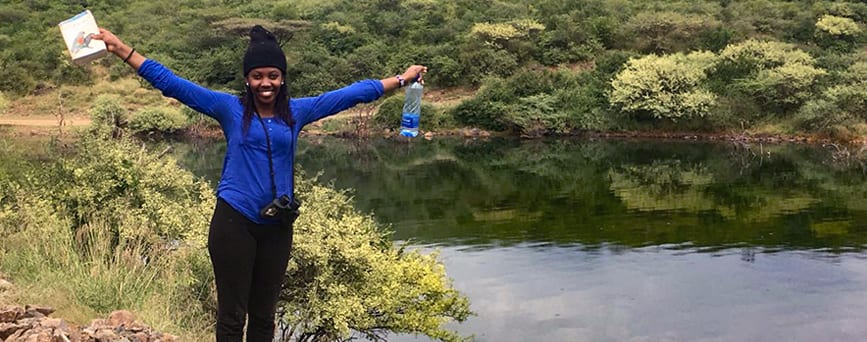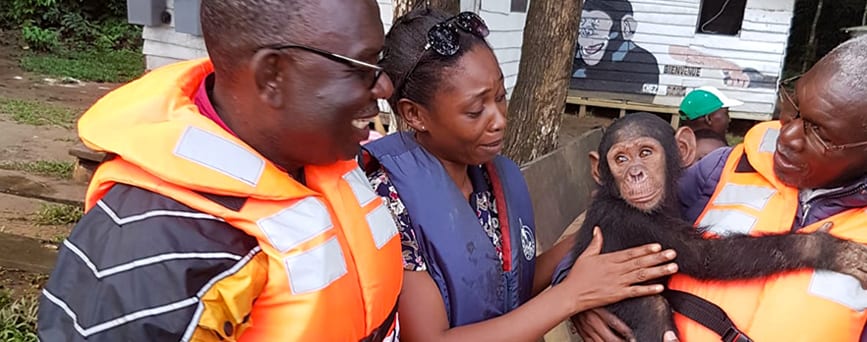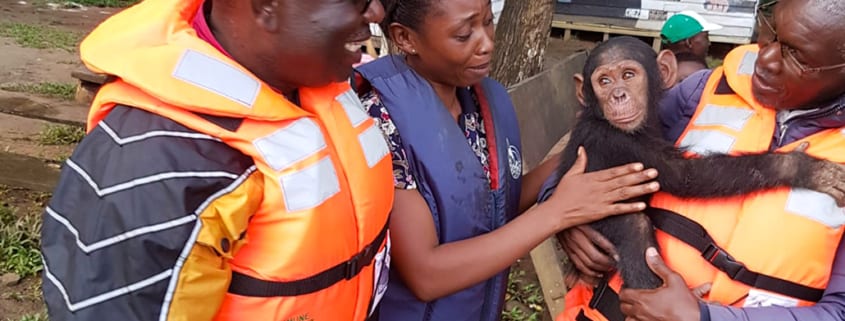International Women’s Day
Ednah Nyambu, Kenya

Ednah works with our partner Nature Kenya’s Saving the Taita Apalis Program, protecting a Critically Endangered endemic bird species in the future Taita Apalis Forest Reserve.
What is a typical day like for you in the forest?
My day begins with an early morning hike to one of the largest refuges for the Critically Endangered Taita Apalis. Inside the forest, I patrol to assess forest disturbance in the form of grazing, fuelwood fetching and logging. I also carry out bird monitoring through identifying and recording birds species both heard and seen to assess abundance in the forest.
What surprises you about your job?
I was surprised about how willing and eager the local community is in wanting to learn more about the endemic species of the Taita Hills forest. Most importantly, they want to see the small bird, the Taita Apalis. I have seen the values of science through fieldwork and its contribution towards decision making and knowledge generation, especially here in the Taita Hills.
What do you like most about working in conservation?
Informing the community of the uniqueness and endemism of the Taita Hills forests and the need to protect and conserve the forests is one of the activities I enjoy doing most in this job. Taita Hills is my home, and as a young, upcoming conservation leader, I feel honored to contribute whatever I can to sustainable conservation of forests for myself and future generations.
Ndelle Lizett Messame, Cameroon

As a project assistant with our partner Cameroon Wildlife Conservation Society, Lizett plans and implements field activities and species inventories. Here she is pictured (center) visiting with a baby chimpanzee in rehabilitation at the Douala-Edea National Park.
What would you like to share about your work?
As a woman conservationist, I feel very special because so many women shy away from this kind of job and consider it to be a dirty job. But they don’t know what it feels like conserving nature and ensuring sustainability of our natural resources. In addition, ever since I started working as a conservationist, I noticed that the interest I have in protecting nature is adding to my capacity as a mother to protect every person around me.
What is a typical day like in the forest?
A typical day in the forest is tedious, especially when I have to make my way through a dense forest of twisted trees. But in the end, you find yourself happy for having contributed to the promotion of nature conservation.
What is the hardest part of your job?
The hardest part of my job is to get the support of a village that has never been sensitized about conservation activities.
Kamala Rai, Nepal

Kamala Rai is a social mobilizer assisting with our partner KTK-BELT’s empowerment and conflict transformation programs. She is seated (center), documenting local traditions with community members in the future Lumbasumba Conservation Area.
Why did you choose this job?
As I got to know about the Lumbasumba Conservation Project, I thought this was my best opportunity to make locals aware of threats and conservation issues, educate them and serve my village by protecting ecosystems, habitats and species through community-based landscape conservation.
What do you like most about working in conservation?
Conservation provides long-term benefits for the locals by protecting unique habitats, forests, plants, butterflies, animals and wetlands. I think conservation supports sustainable development goals rather than promoting short-term benefits.
What is the hardest part of your job?
I think the work we are doing teaches us how to work further. I feel attached to every part of the project and feel proud for serving my village and the conservation of surrounding nature. Thus, I don’t feel anything is hard about this job and assigned responsibilities.
Petga Feukeu Emilie Laure, Cameroon

As a field assistant for our partner Cameroon Wildlife Conservation Society, Petga supports eco-health education and outreach activities associated with Douala-Edea National Park.
What do you like most about working in conservation?
What I like most about this work is participating in the protection of the environment, nature, animal species, plants and rare resources. I appreciate the opportunity to sensitize and integrate the community into conservation projects, thus making it possible to shift their value to the biodiversity of a region.
What is a typical day like for you in the forest?
A typical day in the forest is full of emotions and excitement to discover new surprises, but it is also a moment of escape from the daily grind of the city and a rest for the spirit.
What has surprised you about your work?
In the course of my work, I was surprised by the hospitality of the communities bordering the national park which facilitates the completion of the teams on the ground in an area where there are no accommodation facilities.
Rainforest Trust projects thrive thanks to the important conservation work of people on the ground. The Voices from the Rainforest series brings you news from our projects in Latin America, Africa, Asia and the Pacific — from the perspectives of those working in and for the rainforests.




